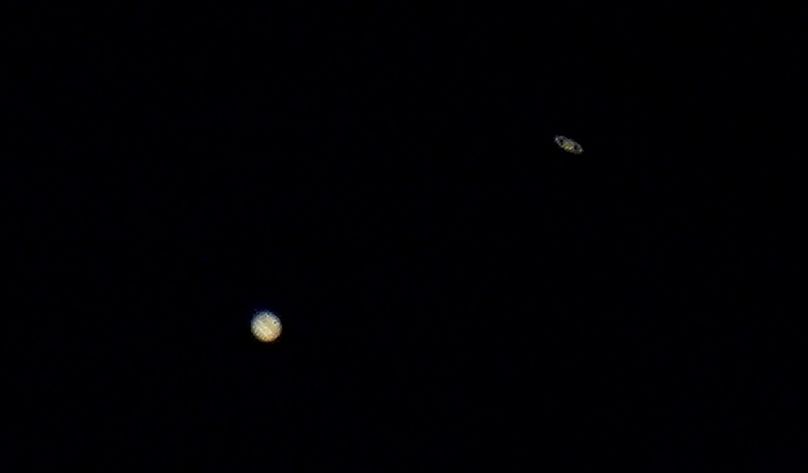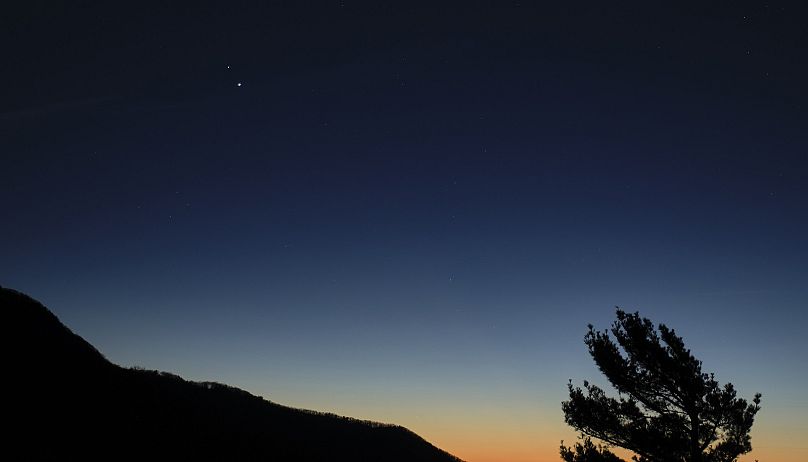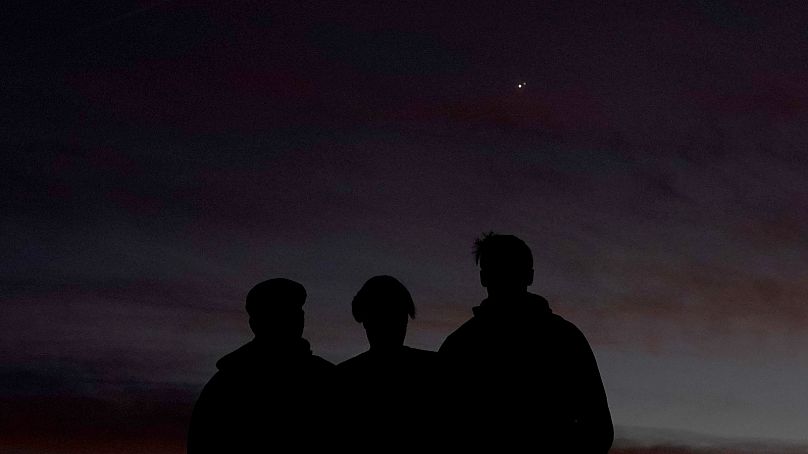The planets pass each other in their respective orbits around the Sun every 20 Earth years, they haven't been this close in the sky since 1623.
Jupiter and Saturn, the two largest planets in our solar system, aligned on Monday in an event known as the Great Conjunction.
While the planets pass each other in their respective orbits around the Sun every 20 Earth years, they haven't been this close in the sky since 1623.
They have been visibly close together in the night sky for most of this year, but Monday night was their nearest point as viewed from Earth - less than the diameter of the full moon apart.
Astronomer and Author Tom Kerrs told Euronews: "Four hundred years ago was the last time we saw one (a Great Conjunction) quite so special as this and that's why astronomers are encouraging you to go out and take a look."
Watch the full interview on the player icon above.
"You can imagine the solar system to be a racetrack, with each of the planets as a runner in their own lane and the Earth toward the centre of the stadium," said Henry Throop, an astronomer in the Planetary Science Division at NASA's headquarters in Washington.
"From our vantage point, we’ll be able to see Jupiter on the inside lane, approaching Saturn all month and finally overtaking it on December 21."
Stargazers would have been able to observe the gas giants through a pair of binoculars, according to Professor Matthew Bate, Head of Astrophysics at Exeter University.
"If you have binoculars with the magnification of greater than about eight times, then you should be able to see some of the Galilean moons,” he said.
The best time to view the event in the UK was between 30 minutes and two hours after sunset, according to Exeter University's website.














